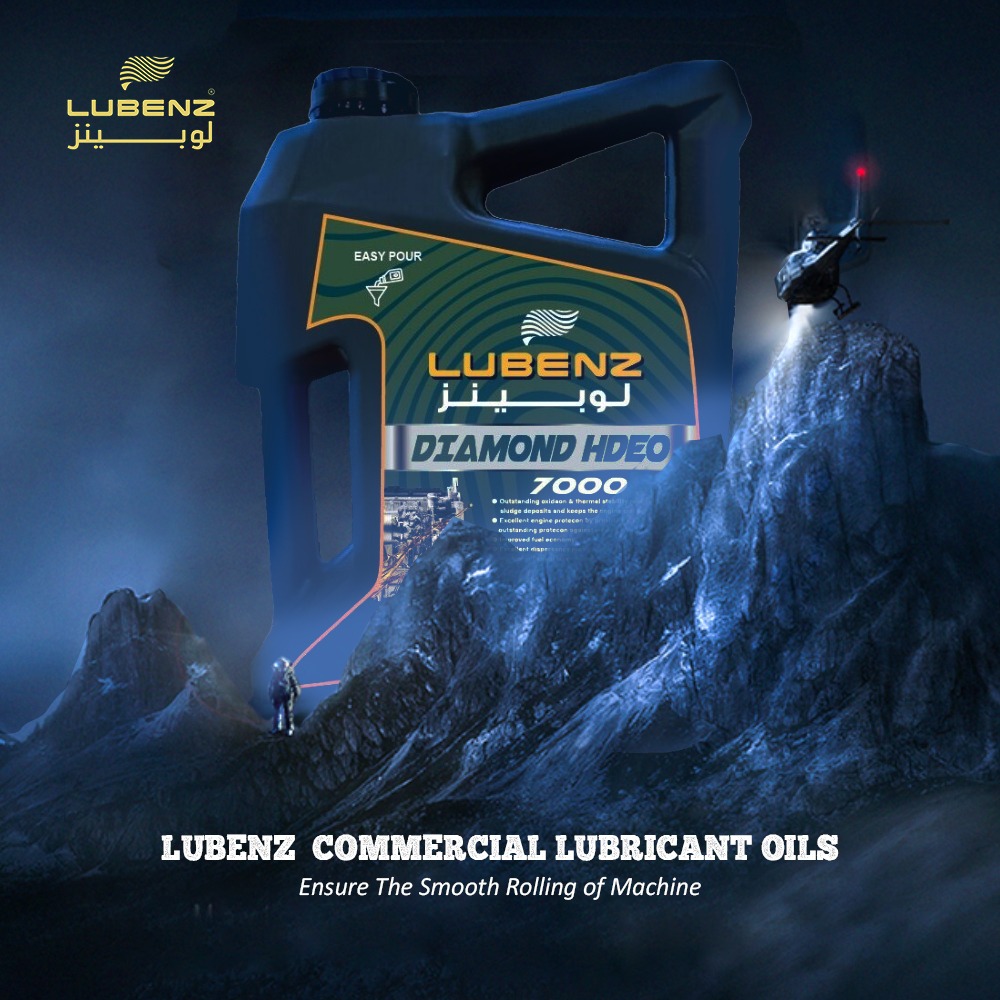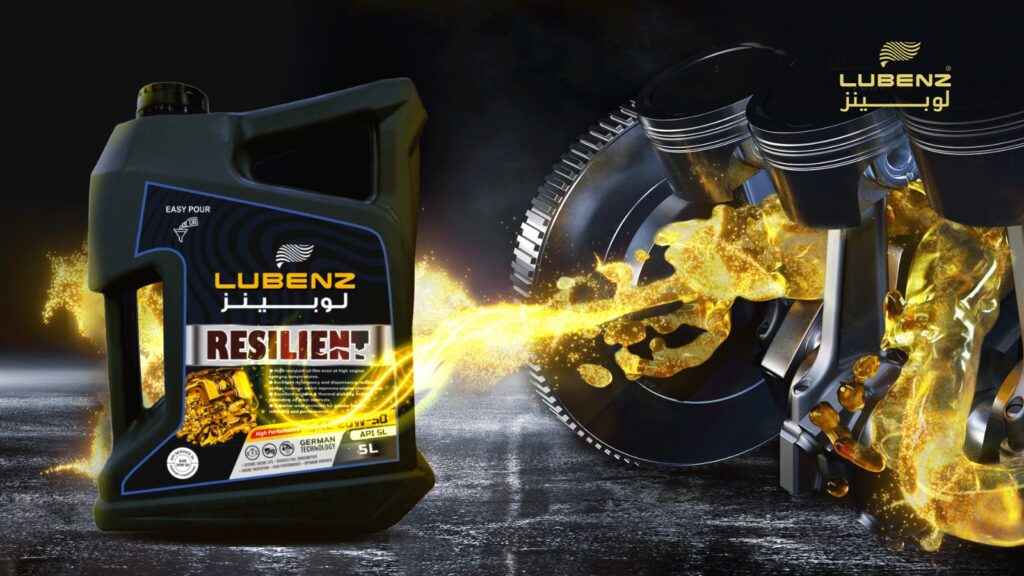LUBRICANTS wholesaler in Belgium
LUBRICANTS supplier in Belgium
Key Facts about Lubricants in Belgium
1. Economic Contribution
Significant Industry Player: Belgium is a key player in the European lubricants market, contributing significantly to the national economy through production, export, and employment.
Export Hub: Belgium’s strategic location and advanced logistics infrastructure, including the Port of Antwerp, make it a major hub for the export of lubricants to neighboring countries and beyond.
2. Industrial Usage
Diverse Applications: Lubricants in Belgium are used across various industries, including automotive, manufacturing, metalworking, food processing, and energy.
Automotive Sector: The automotive industry is a major consumer of lubricants, using them to enhance engine performance, reduce wear and tear, and improve fuel efficiency.
3. Technological Advancements
Innovative R&D: Belgian companies invest heavily in research and development to create advanced lubricants, including synthetic and bio-based options that offer superior performance and environmental benefits.
High-Performance Lubricants: Development of lubricants that meet stringent performance requirements for modern machinery, ensuring efficiency and longevity.
4. Environmental Sustainability
Eco-Friendly Products: Increasing focus on the production and use of biodegradable and non-toxic lubricants that reduce environmental impact.
Regulatory Compliance: Belgium enforces strict environmental regulations that ensure lubricants meet high safety and environmental standards, promoting sustainable industrial practices.
5. Strategic Logistics
Port of Antwerp: One of Europe’s largest ports, the Port of Antwerp, is a crucial gateway for the import and export of lubricants, facilitating efficient global trade.
Advanced Infrastructure: Belgium’s well-developed transportation and logistics networks support the efficient distribution and storage of lubricants, ensuring timely delivery across Europe.
6. Market Dynamics
Multinational Presence: Belgium hosts several multinational companies involved in the production and distribution of lubricants, enhancing its role in the global market.
Growing Demand: There is a rising demand for high-quality lubricants that meet the needs of advanced machinery and stringent environmental regulations.
7. Employment and SkillsLUBRICANTS Manufacturer in Belgium LUBRICANTS Manufacturer in Belgium LUBRICANTS Manufacturer in Belgium LUBRICANTS Manufacturer in Belgium LUBRICANTS Manufacturer in Belgium LUBRICANTS Manufacturer in Belgium LUBRICANTS Manufacturer in Belgium LUBRICANTS Manufacturer in Belgium LUBRICANTS Manufacturer in Belgium LUBRICANTS Manufacturer in Belgium LUBRICANTS Manufacturer in Belgium LUBRICANTS Manufacturer in Belgium
Job Creation: The lubricants industry provides numerous jobs in production, research, sales, and logistics, contributing to the country’s employment rates.
Skilled Workforce: Belgium boasts a highly skilled workforce in the lubricants sector, supported by strong educational and training programs.
Conclusion
Belgium’s lubricants industry is a vital component of its economy, marked by significant contributions to industrial efficiency, technological innovation, environmental sustainability, and strategic logistics. The country’s strategic location, advanced infrastructure, and strong regulatory framework position it as a crucial hub in the European and global lubricants market. The continued focus on research and development, coupled with a commitment to sustainability, ensures that Belgium remains at the forefront of advancements in lubricant technology and application.LUBRICANTS Manufacturer in Belgium LUBRICANTS Manufacturer in Belgium LUBRICANTS Manufacturer in Belgium LUBRICANTS Manufacturer in Belgium LUBRICANTS Manufacturer in Belgium LUBRICANTS Manufacturer in Belgium LUBRICANTS Manufacturer in Belgium LUBRICANTS Manufacturer in Belgium LUBRICANTS Manufacturer in Belgium
In Belgium, as in many industrialized countries, a diverse range of lubricants is utilized to meet various industrial and commercial needs. Here’s a detailed overview of the types of lubricants available and their applications in Belgium:
1. Oil-Based Lubricants
Mineral Oils:
Description: Derived from refined crude oil, mineral oils are the most common and versatile type of lubricant.
Applications: Used in automotive engines, industrial machinery, hydraulic systems, and general-purpose lubrication. LUBRICANTS Manufacturer in Belgium LUBRICANTS Manufacturer in Belgium LUBRICANTS Manufacturer in Belgium LUBRICANTS Manufacturer in Belgium LUBRICANTS Manufacturer in Belgium
Examples: Engine oils, hydraulic fluids, gear oils.
Synthetic Oils:
Description: Manufactured from chemical compounds to provide superior performance and stability under extreme conditions.
Applications: Ideal for high-performance engines, aerospace applications, and extreme temperature environments.
Examples: PAO (Polyalphaolefin) oils, ester-based oils.
Bio-Based Oils:
LUBRICANTS Manufacturer in Belgium LUBRICANTS Manufacturer in Belgium LUBRICANTS Manufacturer in Belgium LUBRICANTS Manufacturer in Belgium LUBRICANTS Manufacturer in Belgium
Description: Made from renewable resources, these oils are designed to be environmentally friendly and biodegradable.
Applications: Used in industries where environmental impact is a concern, such as forestry and agriculture.
Examples: Vegetable-based oils, ester-based biolubricants.
2. Grease
Lithium Grease:
Description: A versatile grease known for its good temperature stability and water resistance.
Applications: Commonly used in automotive applications, bearings, and general industrial lubrication.
Examples: Lithium complex grease, multi-purpose lithium grease.
Calcium Grease:
Description: Provides excellent water resistance and is less prone to washout.
Applications: Used in marine environments, construction equipment, and agricultural machinery.
Examples: Calcium sulfonate grease.
Polyurea Grease:
Description: Known for its high-temperature stability and extended service life.
Applications: Suitable for electric motors, high-speed applications, and industrial bearings.
Examples: Polyurea-based high-temperature greases.
3. Solid Lubricants
Graphite:
Description: A dry lubricant that provides good lubrication at high temperatures and under extreme pressure.
Applications: Used in high-temperature processes and as a lubricant for metal-to-metal contact.
Examples: Graphite powder, graphite-based compounds.
Molybdenum Disulfide (MoS2):
Description: Offers high load-carrying capacity and stability under extreme conditions.
Applications: Used in heavy machinery, aerospace, and automotive applications.
Examples: MoS2 additives, greases with molybdenum disulfide.
PTFE (Teflon):
Description: Provides low friction and is chemically inert.
Applications: Used in applications requiring a clean, non-reactive lubricant, such as food processing and electronics.
Examples: PTFE sprays, lubricating films.
4. Water-Based Lubricants
Cutting Fluids:
Description: Emulsions of oil and water used to cool and lubricate cutting tools.
Applications: Used in machining processes, including turning, milling, and drilling.
Examples: Soluble oils, semi-synthetic fluids.
Water-Glycol Solutions:
Description: Mixtures of water and glycol used in hydraulic systems for fire resistance.
Applications: Used in industrial hydraulic systems where fire safety is a concern.
Examples: Water-glycol hydraulic fluids.
5. Specialty Lubricants
Silicone Lubricants:
Description: Provide good thermal stability and are suitable for applications requiring resistance to extreme temperatures and oxidation.
Applications: Used in automotive, aerospace, and electrical applications.
Examples: Silicone sprays, silicone greases.
Food-Grade Lubricants:
Description: Lubricants approved for use in food processing and pharmaceutical industries.
Applications: Ensures safety and compliance in environments where lubricants come into contact with food or pharmaceuticals.
Examples: NSF H1 lubricants, FDA-approved lubricants.
High-Temperature Lubricants:
Description: Designed to withstand high temperatures without degrading.
Applications: Used in ovens, furnaces, and other high-heat environments.
Examples: High-temperature greases, ceramic-based lubricants.
6. Penetrating Lubricants
Description: Low-viscosity oils designed to penetrate tight spaces and loosen rusted or seized parts.
Applications: Used for maintenance and repair tasks to free stuck or corroded components.
Examples: Penetrating sprays, rust removers.
Conclusion
In Belgium, the lubricants market is diverse, catering to various industrial, automotive, and commercial needs. The range of lubricants, from conventional mineral oils to advanced synthetic and specialty products, ensures that there are suitable options for almost any application. The emphasis on technological innovation, environmental sustainability, and regulatory compliance reflects Belgium’s commitment to maintaining high standards in the lubricants industry.Lubricants are used in a wide range of applications across various industries to enhance performance, efficiency, and safety. Here’s an overview of their key uses:
1. Automotive
Engine Oils: Lubricate engine components, reducing friction and wear, and helping to cool the engine. They also clean and protect against corrosion and deposits.
Transmission Fluids: Lubricate and cool the transmission system, ensuring smooth gear shifting and efficient power transfer.
Brake Fluids: Facilitate the transfer of force from the brake pedal to the braking components, and prevent corrosion and vaporization within the brake system.
Greases: Used in wheel bearings, chassis components, and other parts to provide long-lasting lubrication and protect against dirt and moisture.
2. Industrial Machinery
Bearings and Gears: Lubricants reduce friction and wear in bearings and gears, ensuring smooth operation and extending the life of machinery.
Hydraulic Fluids: Transfer power within hydraulic systems, provide lubrication, and help to cool and clean the system.
Compressors: Lubricate compressor components, reduce friction, and assist in cooling to maintain optimal performance.
Pneumatic Tools: Provide lubrication for pneumatic tools and equipment, ensuring reliable and efficient operation.
3. Manufacturing
Cutting Fluids: Used in machining processes such as drilling and milling to cool and lubricate the cutting tool, improve surface finish, and extend tool life.
Forming Lubricants: Applied during metal forming processes to reduce friction, improve material flow, and prevent defects in the finished product.
4. Energy Sector
Turbine Oils: Lubricate and cool turbines in power generation facilities, ensuring efficient operation and preventing overheating.
Transformer Oils: Provide electrical insulation and cooling in transformers, protecting against electrical breakdown and overheating.
5. Aerospace
Aircraft Engine Oils: Lubricate engine components and ensure proper operation under high-stress and high-temperature conditions.
Specialized Greases: Used in aircraft landing gear, control mechanisms, and other critical parts to provide reliable lubrication in extreme conditions.
6. Marine
Marine Engine Oils: Lubricate marine engines, reduce friction, and protect against corrosion and wear in harsh marine environments.
Propeller Shaft Lubricants: Ensure smooth operation and protection of the propeller shaft and other moving parts in marine vessels.
7. Food and Beverage Industry
Food-Grade Lubricants: Approved for use in food processing and packaging equipment, ensuring safety and compliance with hygiene standards.
Sanitary Lubricants: Provide lubrication while maintaining cleanliness and preventing contamination in food processing environments.
8. Electronics
Thermal Greases: Applied between electronic components and heat sinks to improve heat dissipation and prevent overheating.
Contact Lubricants: Reduce friction and improve conductivity in electrical connectors and switches.
9. Construction
Heavy Equipment Lubricants: Used in construction machinery such as excavators and bulldozers to reduce wear and maintain performance under extreme conditions.
Greases for Bearings: Provide lubrication for bearings in construction equipment, ensuring reliable operation and extended service life.
10. General Maintenance
Penetrating Oils: Used to loosen rusted or seized parts, facilitating repairs and maintenance tasks.
Anti-Seize Compounds: Prevent seizing and galling of threaded fasteners and joints, making disassembly easier.
Conclusion
Lubricants are essential in a wide array of applications, contributing to the smooth and efficient operation of machinery, equipment, and systems across various industries. Their roles in reducing friction, minimizing wear, and enhancing performance underscore their importance in maintaining operational efficiency, safety, and longevity.
Lubricant manufacturing is a complex process involving the production of various types of lubricants to meet the diverse needs of different industries. The process typically involves several key stages, including formulation, blending, testing, and packaging. Here’s an overview of how lubricants are manufactured:
1. Formulation
Base Oils: The primary component of most lubricants is the base oil, which can be mineral, synthetic, or bio-based. Base oils are selected based on their properties, such as viscosity, stability, and lubricating ability.
Additives: Various additives are mixed with base oils to enhance performance characteristics. Common additives include:
Anti-Wear Agents: Protect surfaces from wear and tear.
Detergents: Prevent deposit formation and keep surfaces clean.
Dispersants: Keep contaminants in suspension.
Corrosion Inhibitors: Prevent rust and corrosion.
Viscosity Index Improvers: Maintain consistent viscosity across temperature ranges.
Extreme Pressure Additives: Provide additional protection under high-load conditions.
2. Blending
Mixing: Base oils and additives are blended together in precise proportions to achieve the desired properties of the lubricant. This step is typically done in large mixing tanks.
Homogenization: The mixture is thoroughly blended to ensure uniform distribution of additives and consistent quality.
3. Quality Control and Testing
Laboratory Testing: Samples of the blended lubricant are tested for various properties, including viscosity, flash point, pour point, and lubricating performance. This ensures the lubricant meets the required specifications and standards.
Performance Testing: In some cases, lubricants are subjected to real-world testing or simulation to assess their performance under specific conditions, such as high temperatures, extreme pressures, or in different types of machinery.
4. Refinement and Filtration
Filtration: The lubricant is filtered to remove any impurities, particles, or contaminants that may have been introduced during the blending process.
Refinement: Additional refinement processes may be applied to enhance the lubricant’s properties, such as improving its stability, clarity, or appearance.
5. Packaging
Filling: The finished lubricant is transferred to containers, such as bottles, drums, or tanks. The packaging is designed to protect the lubricant from contamination and facilitate easy handling and use.
Labeling: Containers are labeled with important information, including product name, specifications, usage instructions, and safety information.
6. Distribution
Logistics: Packaged lubricants are distributed to various markets and customers through a network of distributors, retailers, and direct sales channels. Efficient logistics ensure timely delivery and availability of products.
7. Regulatory Compliance
Standards and Certifications: Lubricant manufacturers must comply with industry standards and regulations, which may include environmental regulations, safety standards, and quality certifications. Compliance ensures that products are safe, effective, and environmentally friendly.
8. Research and Development
Innovation: Continuous R&D efforts focus on developing new formulations and improving existing products. This may involve creating lubricants with enhanced performance, better environmental compatibility, or specific properties for emerging technologies and industries.
Conclusion
Lubricant manufacturing is a detailed and precise process that combines science and engineering to produce high-quality products for a wide range of applications. From the selection of base oils and additives to rigorous testing and quality control, each stage is crucial for ensuring that lubricants meet performance standards and customer expectations. The industry’s focus on innovation and regulatory compliance helps drive advancements in lubricant technology, contributing to improved efficiency, sustainability, and safety across various sectors.
LUBRICANTS Manufacturer in Belgium LUBRICANTS Manufacturer in Belgium LUBRICANTS Manufacturer in Belgium LUBRICANTS Manufacturer in Belgium LUBRICANTS Manufacturer in Belgium LUBRICANTS Manufacturer in Belgium LUBRICANTS Manufacturer in Belgium LUBRICANTS Manufacturer in Belgium LUBRICANTS Manufacturer in Belgium LUBRICANTS Manufacturer in Belgium
The quality of lubricants is paramount for ensuring their effectiveness and longevity in various applications. High-quality lubricants enhance performance, reduce wear and tear, and extend the life of machinery and equipment. Several factors and characteristics define lubricant quality:
1. Base Oil Quality
Purity: High-quality lubricants use base oils that are free from impurities and contaminants. The purity of the base oil affects the lubricant's stability and performance.
Type: The choice between mineral, synthetic, or bio-based oils impacts the lubricant’s properties. Synthetic and bio-based oils often offer superior performance in extreme conditions compared to mineral oils.
2. Additive Package
Performance Enhancers: The quality and effectiveness of additives are crucial. Additives such as anti-wear agents, detergents, dispersants, and corrosion inhibitors must be present in appropriate concentrations to provide the desired benefits.
Compatibility: Additives must be compatible with the base oil and with each other to prevent issues like precipitation or degradation over time.
3. Viscosity
Consistency: Viscosity refers to the lubricant’s thickness or flow characteristics. High-quality lubricants maintain consistent viscosity across a wide temperature range, ensuring reliable performance in various conditions.
Viscosity Index: A high viscosity index indicates that the lubricant’s viscosity changes less with temperature, which is beneficial for maintaining performance in fluctuating temperatures.
4. Stability
Oxidation Stability: High-quality lubricants resist oxidation, which can lead to the formation of harmful deposits and sludge. Good oxidation stability prolongs the lubricant’s life and maintains its effectiveness.
Thermal Stability: The ability of a lubricant to withstand high temperatures without breaking down is crucial for applications involving heat.
5. Protection and Performance
Wear Protection: A high-quality lubricant provides effective protection against wear and tear on moving parts, reducing friction and extending the life of machinery.
Corrosion Resistance: Lubricants must protect against rust and corrosion, especially in environments exposed to moisture or aggressive chemicals.
Cleanliness: Good lubricants help keep machinery clean by preventing the buildup of deposits and sludge.
6. Environmental and Safety Considerations
Biodegradability: Environmentally friendly lubricants that are biodegradable help reduce environmental impact and align with sustainability goals.
Toxicity and Safety: High-quality lubricants are formulated to be safe for handling and use, with minimal toxicity and risks to health and the environment.
7. Consistency and Homogeneity
Uniformity: A high-quality lubricant is consistent and homogeneous, with no separation of components or formation of particulates. This ensures reliable performance and avoids issues such as clogging or uneven lubrication.
8. Regulatory Compliance
Standards and Certifications: Compliance with industry standards and certifications (e.g., API, SAE, ISO) ensures that the lubricant meets specific performance and quality requirements. Certifications also validate that the lubricant has undergone rigorous testing and quality control.
9. Testing and Quality Control
Laboratory Testing: Regular testing of lubricants for properties like viscosity, flash point, pour point, and wear protection is essential for maintaining quality.
Field Testing: Performance testing in real-world conditions helps verify that the lubricant performs as expected in its intended application.
10. Packaging and Storage
Packaging Integrity: Proper packaging protects the lubricant from contamination and degradation. High-quality packaging also includes clear labeling with accurate product information.
Storage Conditions: Lubricants should be stored in conditions that prevent exposure to extreme temperatures, moisture, or contaminants, which can affect their quality.
Conclusion
The quality of lubricants is defined by a combination of factors including base oil purity, additive effectiveness, viscosity, stability, protective performance, and compliance with environmental and safety standards. High-quality lubricants ensure optimal performance, reliability, and longevity of machinery and equipment, making them essential for efficient and effective operations across various industries. Rigorous testing and adherence to industry standards further support the consistency and dependability of high-quality lubricants.



